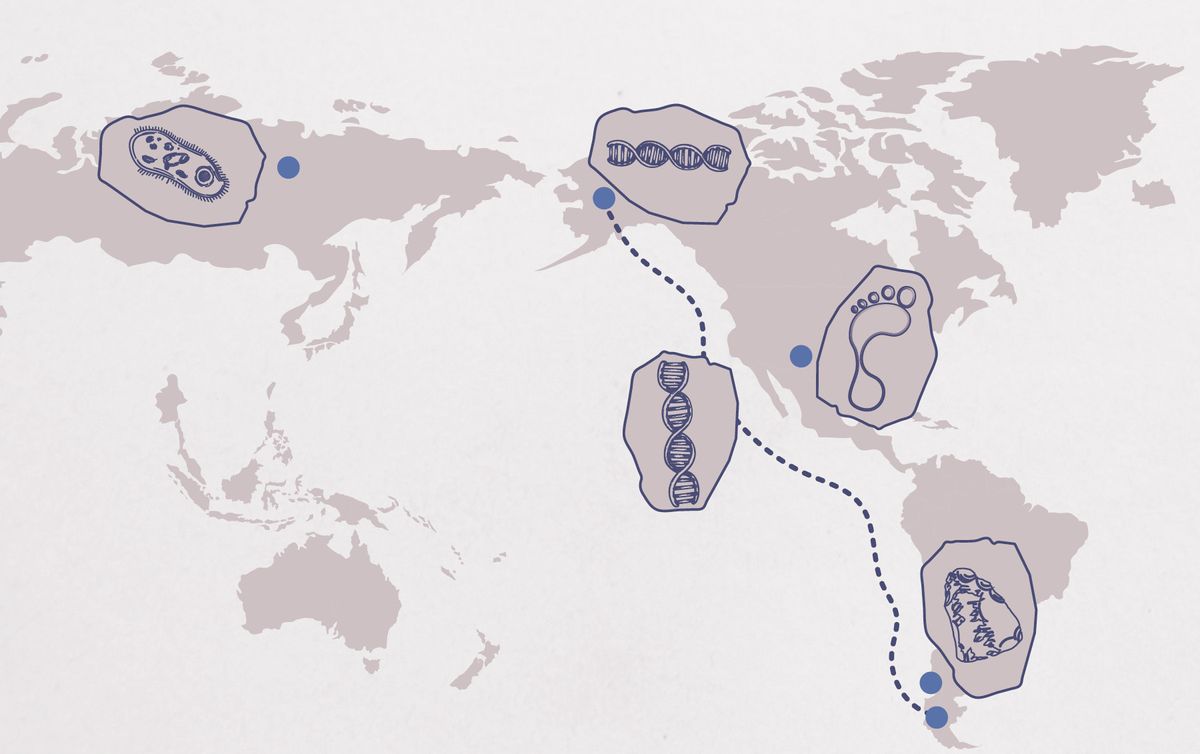For decades, scientists subscribed to the Clovis-first model of the peopling of the Americas, the idea that the earliest humans on the landmass had crossed the Bering Land Bridge after the Last Glacial Maximum when glaciers began to recede, about 13,000 years ago. These people spread widely throughout North and South America, as evidenced by the leaf-shaped spearheads they left behind. Some discoveries have begun to poke holes in the model, however. The Clovis people were in the Americas 13,000 years ago and did spread widely, but it’s becoming more and more clear that they weren’t the first humans to inhabit the New World.

 | SIBERIA |
 | ALASKA |
 | ALASKA TO PATAGONIA |
 | WHITE SANDS, NEW MEXICO |
 | MONTE VERDE, CHILE |
A NEW ROUTE INTO THE AMERICAS
For much of the last ice age, massive glaciers covered the northern part of the Americas. After the last glacial maximum, that ice started to melt, and by 13,000 years ago, an ice-free pathway opened through modern-day Canada that scientists know the Clovis people to have traveled. However, recent archeological and genetic evidence suggests that some groups of people migrated to the Americas before the last glacial maximum, when there was no ice-free corridor, suggesting that they may have traveled along the western coastline. If so, many of the artifacts and remains they left behind may be under water.

Read the full story.






